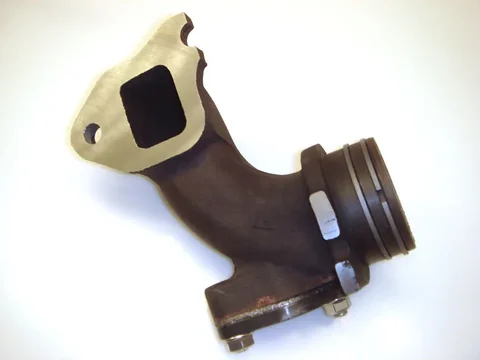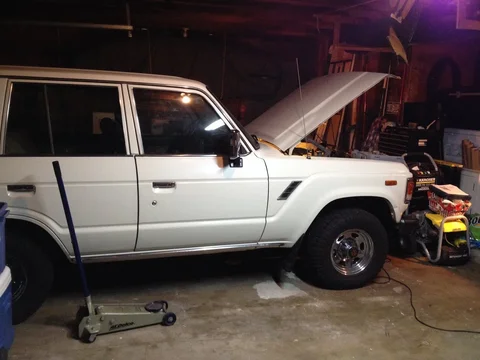I got to thinking, instead of tapping the heat riser shaft hole is there any reason not to just through bolt using some red loctite and maybe some high temp rtv? That way the shaft could be re-installed at a later date if anyone wanted to, for some reason.
Clean looking rig...
Just to make sure I didn't miss something, is the new heat riser shield that you have installed between the manifolds the OEM or the SOR (basically a block-off plate) one?
If it is the OEM one, it is designed to allow hot exhaust gases to hit the bottom of the intake manifold when the heat riser is deflecting exhaust up to the bottom of the intake (when engine is cold). Then, when the engine warms up, the heat riser moves (there is a temperature sensitive coil that rotates the shaft, and since the heat riser is fastened to the shaft, it rotates) and diverts the hot exhaust down the down pipe preventing the hot exhaust from continuously hitting the bottom of the intake manifold.
The SOR block-off plate prevents hot exhaust from hitting the bottom of the intake manifold at all times (hot or cold) because it doesn't allow any exhaust to pass regardless of what the heat riser is doing...and it also shouldn't allow the heat riser to rotate at all, which is why guys either remove it entirely (as you are intending to do) or cut off part of the blade that interferes with the block-off plate so that it can continue to rotate.
If you have the SOR block-off plate installed, then either make sure the heat riser is positioned to divert exhaust down the down pipe or remove it (as you are thinking).
Plugging the holes where the bushings/shaft went through the exhaust manifold is to prevent an exhaust leak.
Any way you design to plug that exhaust leak must hold up to high temps and corrosive exhaust gases. So, in the case of using a removable bolt, I would imagine it would have to be a grade bolt that can withstand a corrosive environment...stainless steele? Or is there a better material?
Same with the high temp RTV sealant...
I know you've probably already considered this...just talking it outloud in case someone else has recommendations to improve on the plan...





